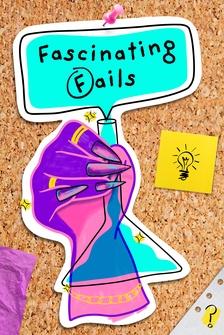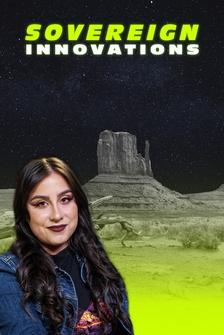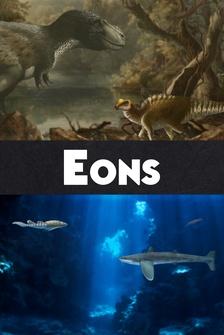(compelling music) - [Arlo] This is the Erebus Glacier in Antarctica.
- [Caitlin] It flows off the flanks of the volcano, Mt.
Erebus, and into the frozen ocean.
- [Arlo] Seeing the glacier tongue from space, it's massive.
Comparable to the size of Manhattan.
- [Caitlin] But seeing it in person.
Honestly, it's a little shorter than I expected.
- It's not about the height, Caitlin, but the depth of the cave.
- Let's go.
- All right, we're ready.
- [Dennis] Nice.
(upbeat music) - [Caitlin] Scattered along the edges are hidden caves.
- And this is different ice.
- [Arlo] And we've joined mountaineer, Dennis Haskell, to track them down.
- [Caitlin] The caves are covered by snow.
You need a good eye to find them.
- [Dennis] There we go.
- [Arlo] But mostly a bit of muscle.
- [Dennis] All right.
- [Caitlin] When we came to Antarctica, we expected to find glaciers falling apart due to climate change.
But that's not exactly what we see right here.
- [Arlo] This is wild.
- Whoa.
Oh my gosh.
Look at these crystals, did you see these?
- [Arlo] It's so cold and calm in this cave, that massive ice crystals form out of thin air.
- This is so cool.
And they're all over the place.
They're like lining everything.
The size of these crystals are also an indicator that this cave is relatively safe.
The larger the ice crystal, the longer this cavern has been here undisturbed.
Oh my gosh, this place is huge.
It kind of opens up into a cavern.
I kind of feel like we're inside the middle of a geode.
- [Dennis] Yeah.
- [Arlo] Instead of a melting planet, this feels like a portal to a frozen planet.
So, what's going on here?
- [Caitlin] To find out, we need to join a science team that's actually trying to reach an ice world far away from our own.
- [Arlo] Specifically, Europa.
(majestic music) - Europa is kind of the reason I get up in the morning.
I'm interested in, is there life beyond Earth?
- [Caitlin] Europa is a moon of Jupiter with a thick layer of ice, covering an ocean that could be up to 100 miles deep.
The big question is, could there be life in Europa's ocean?
To find out, NASA is hoping to eventually send a robot there.
- [Arlo] But first, we need to figure out how to even explore an ice-covered ocean.
Just like Europa, underneath this ice is ocean.
- All right, everybody, welcome to Dive 006.
- [Caitlin] That's why Britney Schmidt is here.
Britney's team is exploring the underside of the Erebus Glacier Tongue.
- Mission goals, look for a path under the glacier heading towards there.
- [Arlo] And the tool to explore under the ice is this guy.
Icefin.
- [Britney] What it carries on it is a whole suite of science sensors that allow us to perceive the environment in a number of ways.
- [Caitlin] So you just bring it out in three pieces and fit them together?
- [Daniel] Yeah.
- Like LEGOs?
- Yeah.
- [Arlo] Assembling Icefin is a team effort.
- So here is three-pin black, and so that should go all the way over to the left.
There you go.
- [Arlo] But lowering the robot to the water-- - [Daniel] Disconnect it and-- - [Arlo] That is a true exercise in cooperation.
- [Radio] All right, switch is on.
(upbeat music) - I got it.
If you guys can pull on the slack.
Justin, will you push the sled back?
Make sure the fiber going into the tent doesn't get tugged on.
- [Radio] Batteries are all at 100%.
Checking power system now.
- [Britney] Okay, ready?
- [Arlo] It's tethered by a thin and extremely delicate fiber optic cable that will transmit all the data back to mission control.
- [Matt] How's it look in there?
- [Radio] Everything looks pretty good.
- [Arlo] When a robot like this goes to Europa-- - [Man] This is my favorite part.
- [Arlo] This process will have to be automated, and there will be no tether.
But for now, this fragile yellow cable is the robot's lifeline.
If it breaks, it's game over.
- [Radio] It looks like the nose is clear of the hole now, over.
- [Arlo] Once the robot is launched, operations move into mission control.
- [Matt] Okay, we're gonna keep diving.
- [Radio] Copy.
- [Caitlin] Which today is inside this little yellow tent.
(mellow synth music) - Dan, can I get a battery check please?
- [Caitlin] This is where they pilot the multi-million dollar robot through a dark, unexplored, treacherous subglacial environment.
- [Arlo] Yep, that is a PlayStation controller.
And no, they didn't let me drive.
I tried.
- [Britney] We're gonna use the ice as a guide, and we're going to head for the actual glacier tongue.
- [Radio] Okay, copy that.
- [Caitlin] We've lowered the robot through the sea ice, which is only about 12 feet thick.
But we're heading toward the Erebus Glacier.
- [Arlo] Once we get there, it's like the Antarctic upside down.
- [Caitlin] Even though above the surface, the Erebus Glacier is less than 100 feet high, it plunges nearly 1,000 feet down into the abyss.
- [Arlo] It's easy to imagine that this might be what it feels like to explore the alien ocean of Europa.
- [Caitlin] They encounter all sorts of surreal life forms.
Some familiar ones.
- [Arlo] And a lot of shrimp.
- [Britney] Look at his legs.
He's so cute.
(all laughing) - In addition to spotting critters, Britney's team is collecting data about the ocean physics and chemistry, and also mapping the environment, just like they'd hope to do on Europa.
They're testing which instruments are the most useful, and literally learning to drive.
But they aren't just aimlessly wandering.
They actually have a very specific destination.
So the robot comes from over there, swims by right here where you have a light.
- [Britney] It'll swim right here and head right for these kind of, the underside of where these kind of shiny peaks are coming out.
So we're trying to get to where it folds, back there.
That's the grounding line.
- [Caitlin] What's the grounding line?
- [Britney] Basically the place where the glacier comes off the land and starts to float in the ocean.
- [Caitlin] The grounding line is a critical juncture for a glacier, where the glacier, ground, and water all meet.
This is where Icefin is heading.
A spot where no person or machine has been before.
And what happens right here, can have a major impact on what happens to the glacier further inland.
- As the ocean warms up it's eroding that place.
And the grounding line moves back over time and that can make the whole thing unstable.
So then it's more melting, faster moving ice, more melting, faster moving ice.
Basically it is a way of pulling ice from the interior of Antarctica that is currently held up by ground into the ocean where it can contribute to sea level rise.
- [Caitlin] So, it turns out that this mission isn't just about Europa.
It's also investigating how the ocean right here on Earth can destabilize ice, leading eventually to sea level rise.
- [Arlo] The Erebus Glacier isn't where we're seeing the major impacts of warming water.
But further north, it's a different story.
There are far more massive glaciers, like the Thwaites Glacier, which is about the size of Florida, and it's not doing so well.
(concerning music) Over the past 30 years, the flow of ice into the ocean has nearly doubled.
- [Britney] Thwaites is an environment where there's a lot more warmer ocean water making it onto the continent and making it underneath the glacier.
It's incredibly unstable.
The grounding line is rapidly retreating.
- [Caitlin] Thwaites is the glacier that is keeping scientists up at night.
That's why the team is heading there next, as part of an international collaboration to investigate the glacier.
- Here we are on Thwaites Glacier, near the grounding zone.
The grounding zone to the south is behind me.
And we're attempting to drill into that.
- [Caitlin] Thwaites alone is already responsible for about 4% of sea level rise.
And it's showing signs of collapsing further.
In 2019, scientists reported that they had found a massive cavity under the glacier.
About 14 billion tons of ice had melted, most of it in just three years.
- [Arlo] And if that's not bad enough, if Thwaites does collapse, it could destabilize a much larger region of ice, the West Antarctic Ice Sheet.
This could lead up to about 11 feet of sea level rise.
So scientists need to get under Thwaites and see what's going on.
Fast.
- The goal there is to do exactly what we're practicing here at Erebus Glacier Tongue, which is to explore these places where glaciers are becoming unstable.
- [Caitlin] After the robot finds and maps the grounding line of the Thwaites Glacier, and scientists combine that with other data from the collaboration, we will be able to better understand how the glacier is deteriorating, and predict how fast it might fall apart.
- It's kind of a game there in how much can we do to make our models better and make our physical understanding better, how much can we mitigate and then how much do we have to prepare for.
- [Caitlin] Our stomping ground, the Erebus Glacier Tongue, was really just a training ground for Icefin, practicing for Thwaites.
- [Arlo] It's like Erebus was the tutorial and Thwaites is the boss fight.
- [Man] We're at 880 meters.
- [Arlo] Europa, well, that might be in the expansion pack.
- We're motivated in the long run by getting this data that'll send us into space but there's important climate problems and really just unknowns about the earth that we live in.
- [Caitlin] Robots like Icefin might one day allow us to discover life on another world.
- [Arlo] But while it learns the ropes of interplanetary travel, there's a lot left to explore right here on Earth.
- [Caitlin] Seems like you guys have been working too many hours.
- No.
- No.
- We're ready.
(upbeat music) ♪ Let your body, get on it with your body ♪ (bright synth music) (bright music)















